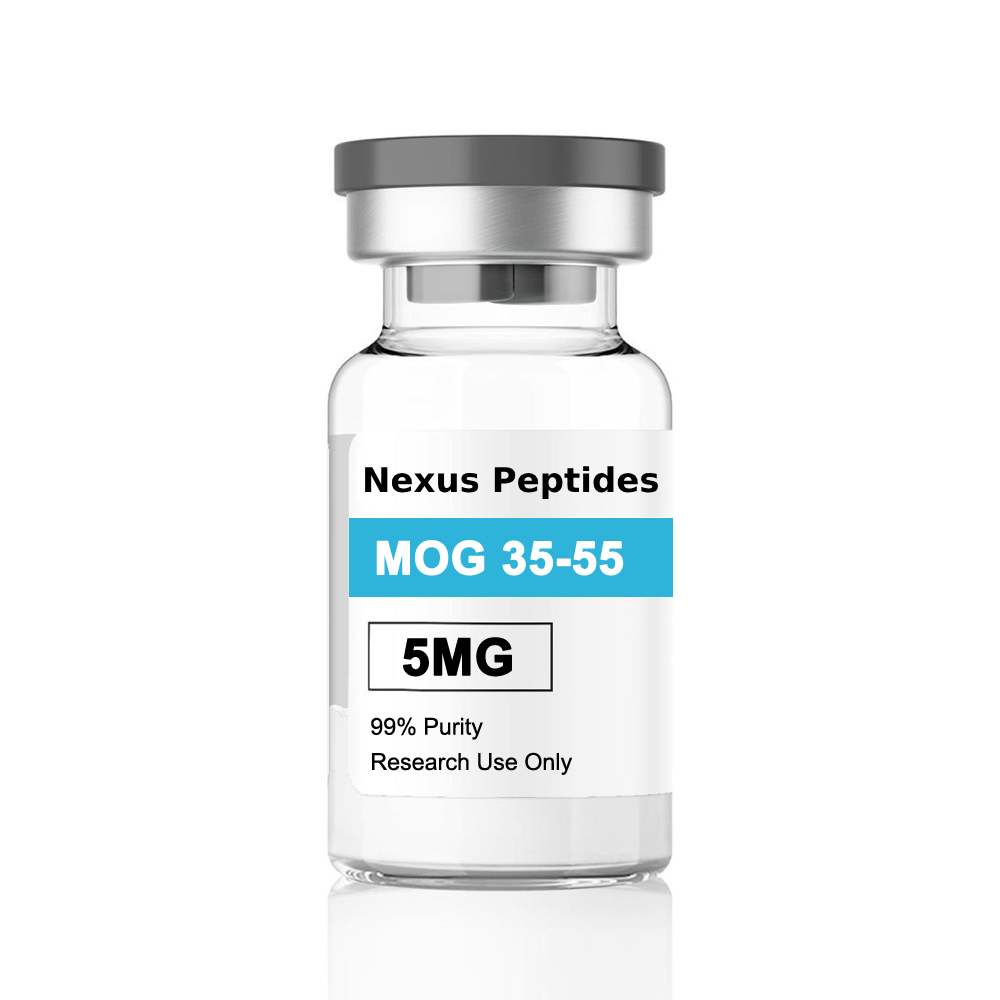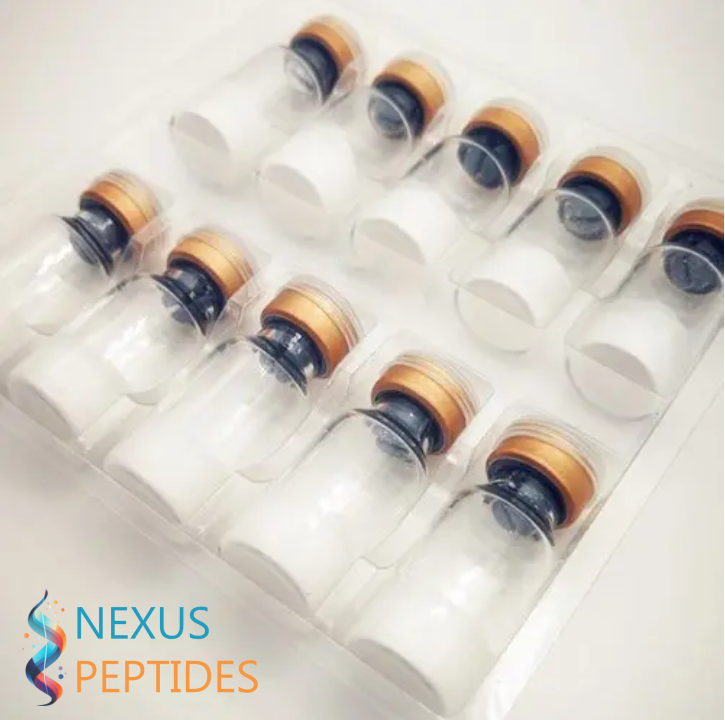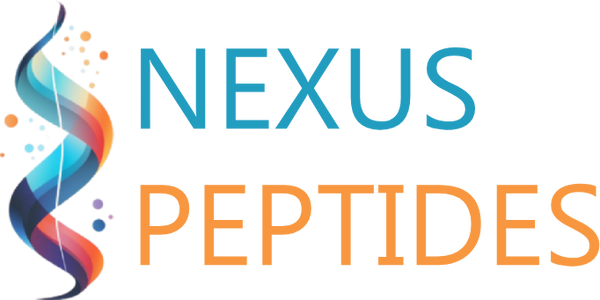Nexus Peptides
Mog 35-55: 5-10mg*10 Vials
Mog 35-55: 5-10mg*10 Vials
Couldn't load pickup availability
Share


Product Description: MOG 35-55
Introduction
MOG 35-55 is a synthetic peptide that consists of a sequence derived from the myelin oligodendrocyte glycoprotein (MOG), a membrane protein found in the central nervous system. The peptide is commonly used in research studies focused on understanding immune responses and neurological diseases, particularly those involving the immune system’s interaction with the central nervous system. As a high-purity peptide, MOG 35-55 is typically utilized in laboratory experiments to study autoimmune disorders, neuroinflammation, and related mechanisms in immunology and neurobiology.
What is MOG 35-55?
MOG 35-55 is a synthetic fragment of the full-length MOG protein, specifically designed for research purposes. MOG is a glycoprotein found on the surface of oligodendrocytes, which are cells responsible for myelination in the central nervous system (CNS). The MOG 35-55 peptide represents a sequence from the extracellular domain of the MOG protein and is often used in animal models to induce experimental autoimmune encephalomyelitis (EAE), a model of multiple sclerosis (MS) and other autoimmune diseases.
This peptide is useful for researchers investigating immune system responses to CNS components and studying the mechanisms behind autoimmune diseases that involve the destruction of myelin. It is important to note that MOG 35-55 is strictly for laboratory use and should not be used for human consumption or clinical applications.
Potential Different Names
- MOG 35-55
- Myelin Oligodendrocyte Glycoprotein 35-55
- MOG peptide fragment
- MOG 35-55 fragment peptide
- MOG-derived peptide
Chemical Formula
- The chemical formula of MOG 35-55 depends on the exact peptide sequence used but typically corresponds to a sequence composed of amino acids such as C177H285N49O58S2 for a specific formulation. The formula will vary depending on the version and modifications of the peptide.
Structure
MOG 35-55 is a synthetic peptide consisting of a segment of the MOG protein, specifically the amino acid sequence from positions 35 to 55. It is a short chain of amino acids that mimics a portion of the MOG protein and retains the immunogenic properties of the full-length protein. The peptide is typically synthesized as a linear sequence, though it can also be cyclized depending on the research requirements. It is important to note that the peptide is designed to be stable and functional under laboratory conditions.
The structure of MOG 35-55 is as follows (a typical sequence for the peptide):
- Sequence: Ac-Asp-Glu-Pro-Thr-Thr-Leu-Val-Ser-Val-Pro-Lys-Pro-Ser-Lys (this may vary slightly based on specific research formulations).
This peptide sequence contains both hydrophobic and hydrophilic residues that enable it to interact with immune system components and neural tissue in experimental conditions.
How Does It Work?
MOG 35-55 functions primarily in research as an immunogenic peptide, stimulating immune responses that mimic the processes seen in autoimmune diseases like multiple sclerosis (MS). When administered in animal models, MOG 35-55 induces the production of antibodies that target the myelin protein, which is a key feature in autoimmune conditions involving the CNS. This is the basis for using MOG 35-55 in the induction of experimental autoimmune encephalomyelitis (EAE), which is used to study MS and related disorders.
The peptide works by interacting with the immune system, specifically by binding to major histocompatibility complex (MHC) molecules on antigen-presenting cells, which then activate T-cells. These T-cells, in turn, recognize MOG 35-55 as an antigen and stimulate an immune response. This immune activation leads to inflammation and potential tissue damage, making it a useful model for studying neuroinflammation and myelin-related diseases.
By using MOG 35-55 in laboratory research, scientists can gain insights into the molecular mechanisms that underlie autoimmune responses, the interaction between the immune system and the central nervous system, and the pathology of diseases such as multiple sclerosis. Additionally, it provides a basis for testing potential therapeutic agents that may modulate immune responses in these conditions.
Conclusion
MOG 35-55 is a synthetic peptide derived from the myelin oligodendrocyte glycoprotein and is used primarily in laboratory research focused on immune system functions and neuroinflammation. Its ability to mimic part of the MOG protein and stimulate immune responses makes it a valuable tool in the study of autoimmune diseases such as multiple sclerosis. Researchers use MOG 35-55 to model conditions like experimental autoimmune encephalomyelitis (EAE), facilitating the understanding of immune interactions with the central nervous system and exploring potential therapeutic avenues.
Disclaimer
MOG 35-55 is intended for research purposes only. It is not for human consumption, clinical use, or diagnostic purposes. The product should only be used in accordance with appropriate laboratory safety guidelines. Researchers are responsible for ensuring proper handling, storage, and disposal in line with institutional and regulatory requirements. This description is provided for informational purposes only, and no health claims are made regarding the use of this product.


